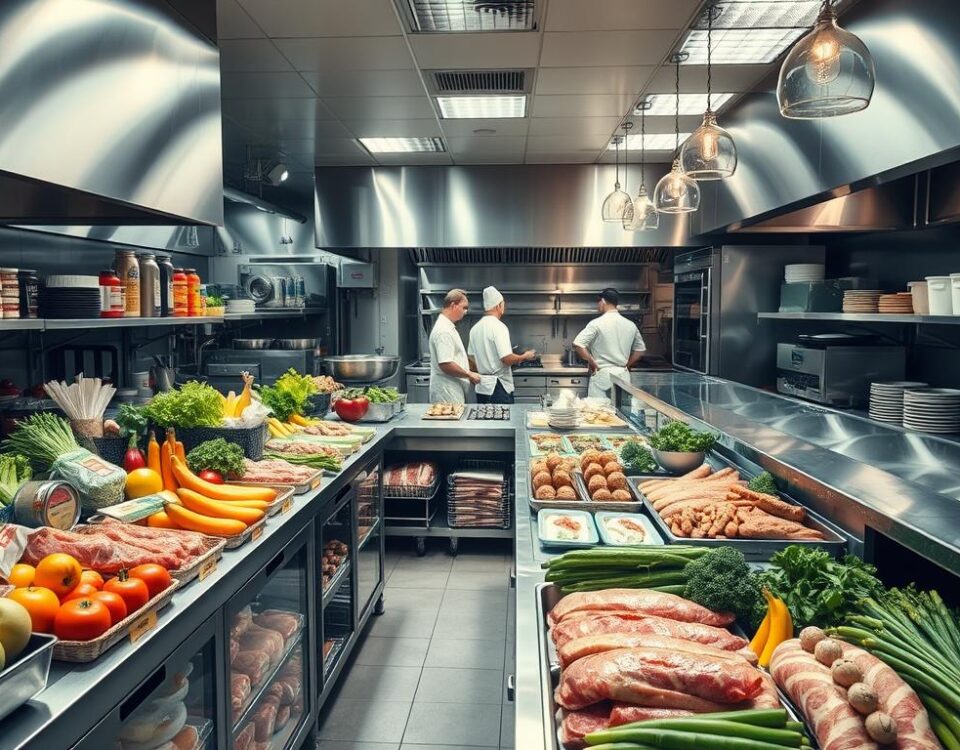
The Ultimate Guide to Cooking Like a Greek Grandma
April 26, 2025
Taste of Turkey: How to Cook the Perfect Homemade Lahmacun
April 26, 2025Growing up in a home where the aroma of toasted cumin and turmeric danced through the air, I learned early that food isn’t just sustenance—it’s a story. My husband, whose family recipes span generations from Mumbai to our kitchen in Chicago, once told me, “A great dish doesn’t just feed the body. It awakens the soul.” That’s the magic I want to share with you today.
Last winter, I hosted a dinner where a friend hesitantly tried her first bite of chicken tikka masala. Her eyes widened. “This tastes like fireworks!” she exclaimed. That moment—the joy of discovery, the warmth of shared flavors—is why I’ve curated this list. Whether you’re simmering coconut-infused sauces or balancing garam masala’s heat, these dishes transform ordinary evenings into celebrations.
From velvety butter chicken to vibrant vegetable korma, each recipe here has been tested in my own kitchen. You’ll find tips for pairing them with fluffy basmati rice or cooling yogurt raita, plus secrets for layering spices like a pro. Let’s turn your weeknight meals into something unforgettable.
Key Takeaways
- Discover both classic and modern twists on beloved dishes
- Learn how to balance bold spices with creamy sauces
- Find perfect pairings like buttery naan and aromatic rice
- Explore vegetarian options bursting with seasonal vegetables
- Gain practical tips for building flavor depth in every bite
Uncovering the Magic of Indian Curries
When I first learned how Mughal emperors blended Persian cooking methods with local ingredients, it clicked: every bite of curry tells a 5,000-year story. Coastal traders brought black pepper to ancient ports, while monsoon rains nurtured turmeric fields. This alchemy of geography and history lives in every simmering pot.
A Brief History and Cultural Impact
My grandmother’s kitchen taught me that curries aren’t just food—they’re edible archives. British colonists coined the term “curry” from the Tamil word “kari,” but the practice of layering spices in sauces dates back to Indus Valley civilizations. Regional climates shaped distinct styles: coconut-rich sauces in Kerala, mustard-heavy blends in Bengal.
Signature Spices and Essential Ingredients
Three elements transform simple stews into flavor explosions:
- Turmeric: Earthy base notes and golden hues
- Cumin: Smoky depth in tadka (tempered oil)
- Garam masala: Warm finish added at serving
Last Diwali, I watched my aunt toast whole spices before grinding them. “Heat wakes their souls,” she said, demonstrating the technique that makes restaurant sauces taste flat compared to homemade versions. Pair these blends with cooling yogurt or fluffy basmati rice to complete the experience.
Indian curry must try: Top Curry Recipes to Empower Your Week
Balancing spices isn’t just cooking—it’s composing a symphony of flavors. Last Tuesday, my neighbor texted: “Your kitchen smells like my childhood in Lucknow!” That’s the power of these dishes. They bridge memories and create new ones, one simmering pot at a time.

Rich Cream Classics
My chicken korma recipe taught me patience. Toasting almonds with cumin before blending them into yogurt-marinated chicken creates velvet textures. For butter chicken, I simmer tomato sauce with crushed kasuri methi—the dried fenugreek leaves add an earthy whisper most restaurants miss.
Plant-Powered Wonders
Vegetarian options shine brightest when spices meet technique. My trick? Sauté onions until caramelized for butter paneer’s base. For lentil dal, I temper mustard seeds in ghee before stirring in coconut milk. The result? Dishes that make meat an afterthought.
| Dish | Key Ingredients | Flavor Boosters |
|---|---|---|
| Chicken Korma | Yogurt, almonds, garam masala | Toasted coconut flakes |
| Butter Paneer | Fresh tomatoes, cream | Charred ginger slices |
| Lentil Dal | Red lentils, turmeric | Tadka with cumin seeds |
My aunt once said, “Great recipes aren’t followed—they’re felt.” That’s why I encourage swapping cashew butter for cream or adding roasted pumpkin to dal. These dishes thrive on creativity, not rigid rules.
Navigating the Diverse World of Indian Curries
My first bite of Goan vindaloo was a revelation—how could one dish vary so wildly across miles? This discovery sparked my journey through India’s regional kitchens, where geography writes the recipe book. Local climates and cultural exchanges shape everything from spice ratios to cooking techniques, turning each meal into a edible map.
Regional Variations and Authentic Flavor Profiles
Northern styles often use dairy-rich bases like cream or yogurt, while southern versions lean on tangy tamarind and coconut. Last monsoon season, I watched a Kerala chef temper mustard seeds in coconut oil for fish molee—a technique unseen in Punjab’s butter-laden gravies. Authenticity here isn’t about rules, but respect for ingredients born from the land.
Compare these regional stars:
| Region | Signature Dish | Spice Blend | Cooking Method |
|---|---|---|---|
| North | Rogan Josh | Fennel, ginger | Slow-simmered in yogurt |
| South | Chettinad Chicken | Black pepper, star anise | Dry-roasted spices |
| West | Goan Fish Curry | Kokum, cumin | Quick coconut broth |
| East | Bengali Shorshe | Mustard, green chilies | Steamed in banana leaf |
Even familiar dishes transform regionally. What’s called “korma” in Delhi becomes “kurma” in Chennai—lighter, with curry leaves instead of cashew paste. To perfect your spice balance, start by understanding these culinary dialects. It’s like learning accents in a delicious language.
Essential Tips for Cooking and Balancing Spices
I once ruined a pot of lentil dal by adding raw cumin too late. My mother-in-law chuckled and said, “Spices are shy performers—they need time to find their voice.” That lesson became my north star for crafting vibrant flavors. Let’s explore techniques that turn timid ingredients into bold statements.

Tempering Techniques and Layering Flavors
Tadka (tempering) unlocks hidden depths in spices. Heat oil until it shimmers, then add whole cumin or mustard seeds. When they crackle, pour this fragrant oil over your dish. For layered complexity, toast ground turmeric early in cooking, then finish with fresh garam masala.
| Technique | Spices Used | Effect |
|---|---|---|
| Tempering | Cumin, mustard seeds | Nutty aroma foundation |
| Slow-cooked onions | Garlic, coriander | Caramelized sweetness |
| Finish sprinkles | Kasuri methi, cilantro | Bright top notes |
Using Fresh Ingredients for a Bold Taste
Pre-ground spices lose their spark quickly. Grind whole peppercorns and cinnamon sticks weekly. Fresh ginger juice or hand-crushed tomatoes add zing that canned versions can’t match. Last week, swapping dried for fresh curry leaves transformed my blend from flat to electric.
Customizing Heat Levels to Suit Your Palate
Love tingling lips? Add green chilies during cooking. Prefer milder flavors? Stir in coconut milk or yogurt at the end. My trick: keep a bowl of lemon wedges on the table. Acid cuts through heat instantly, letting guests adjust each bite.
“Taste as you go—your tongue is the best recipe book.”
Remember, balance isn’t perfection. It’s about making the spices sing in harmony with your preferences. Now go awaken those shy performers!
Exploring Global Curry Inspirations
My first taste of Trinidadian curry goat surprised me—the warmth of Scotch bonnet peppers danced with toasted geera seeds in ways that felt both familiar and entirely new. That meal sparked my curiosity about how different cultures interpret simmered spices and sauces. Let’s travel through kitchens worldwide to discover how shared techniques birth distinct flavors.

Signature Styles Across Borders
Thai curries burst with fresh herbs and chili paste. Green versions get their kick from bird’s eye chilies, while massaman blends cinnamon and star anise—a nod to Persian traders. Japanese kare raisu uses roux blocks for thickness, creating a mild, sweet blend that pairs perfectly with crispy tonkatsu.
Caribbean cooks often marinate chicken or lamb in turmeric and allspice before slow-cooking. My Jamaican friend taught me to finish goat curry with coconut milk for creamy balance—a technique I now use in my own cooking.
| Region | Signature Dish | Base Ingredient | Spice Character |
|---|---|---|---|
| Thailand | Green Curry | Fresh basil, lime leaves | Pungent, herb-forward |
| Japan | Curry Udon | Wheat roux, soy sauce | Umami-rich, mild heat |
| Trinidad | Curry Goat | Scotch bonnet, garlic | Smoky, slow-building fire |
While Indian vindaloo relies on vinegar’s tang, Caribbean versions use mango powder. These subtle shifts show how ingredients adapt to local palates. Why not experiment? Swap Thai basil for cilantro in your next dish, or add Japanese curry powder to roasted veggies. The world of flavors is your kitchen playground.
Pairing Curries with Perfect Sides
I’ll never forget the first time I served dal with store-bought pita bread. My friend from Hyderabad grinned and said, “You’re missing the magic carpet ride!” That’s when I realized sides aren’t just add-ons—they’re flavor conductors that elevate every bite.

Rice, Naan, and Other Accompaniments
Fluffy basmati rice acts like a flavor sponge, soaking up tomato-based sauces in chicken tikka masala. Freshly baked naan? It’s your edible spoon for scooping vindaloo’s fiery chunks. Try these pairings:
| Side | Best With | Why It Works |
|---|---|---|
| Jeera rice | Creamy kormas | Cumin seeds cut through richness |
| Garlic naan | Tangy rogan josh | Roasted garlic balances spices |
| Roti | Dry spinach dishes | Thin texture lets greens shine |
Don’t sleep on crispy papadums or tangy pickled onions. They add crunch and brightness between bites.
Creating a Balanced Meal Experience
A bowl of raita cools your palate after spicy bites. Pair heavy dishes like butter chicken with citrusy salads. My golden rule? Contrast temperatures and textures.
Last week, I served mango lassi with lamb curry. The sweet yogurt drink tamed the heat without dulling the garam masala’s warmth. Experiment with:
- Cucumber-mint salad for coconut-based sauces
- Lemon wedges with lentil stews
- Toasted cashews on vegetable biryani
Remember, sides should enhance—not overpower. Let your main dish remain the star while supporting players add depth. Now go build your flavor symphony!
Conclusion
From the first time I stirred toasted cumin into a simmering pot, I knew spices held transformative power. This journey through velvety chicken tikka masala, fiery vindaloo, and coconut milk-kissed vegetable stews proves one truth: every dish is a canvas for creativity. Whether you’re caramelizing onions for lamb rogan josh or balancing garam masala’s warmth, the magic lies in trusting your palate.
My kitchen experiments taught me that quality ingredients matter most. Freshly ground spices sing louder than stale powders. Pairing fluffy naan with saucy creations turns meals into celebrations. Don’t fear substitutions—swap spinach for kale, or try mango powder instead of tamarind.
Now it’s your turn. Share your triumphs with crispy papadums or that time your chicken curry surprised everyone. Let’s keep this flavorful conversation bubbling—drop your favorite tips below and inspire someone’s next kitchen adventure!
FAQ
What spices are essential for authentic flavor?
I always start with garam masala, turmeric, cumin, and coriander. Fresh ginger, garlic, and chili peppers add depth. Don’t forget a splash of coconut milk or yogurt for creamier dishes!
How do I adjust the heat level without losing flavor?
Balance is key! I use milder chilies or reduce seeds for less heat. Adding a dollop of yogurt or a squeeze of lime cools things down while keeping the spice blend vibrant.
What’s the best way to pair curries with sides?
Fluffy basmati rice soaks up sauces perfectly. I love tearing warm naan for dipping, or serving a crisp cucumber raita to contrast rich flavors. It’s all about texture and balance!
Can I make vegetarian versions of classic meat curries?
Absolutely! Swap chicken with paneer or chickpeas in tikka masala. Lentil dals or spinach-heavy saag are my go-tos for hearty, plant-based meals that still feel indulgent.
How do Indian curries differ from Thai or Caribbean styles?
While Thai curries rely on lemongrass and kaffir lime, I focus on toasted spices like cumin and mustard seeds. Caribbean versions often use allspice, but Indian dishes shine with layered masalas and slow-cooked sauces.
What’s the secret to achieving restaurant-quality depth?
Tempering whole spices in hot oil first! I bloom mustard seeds, curry leaves, or cinnamon sticks to infuse the base. Fresh herbs added at the end lock in brightness.



